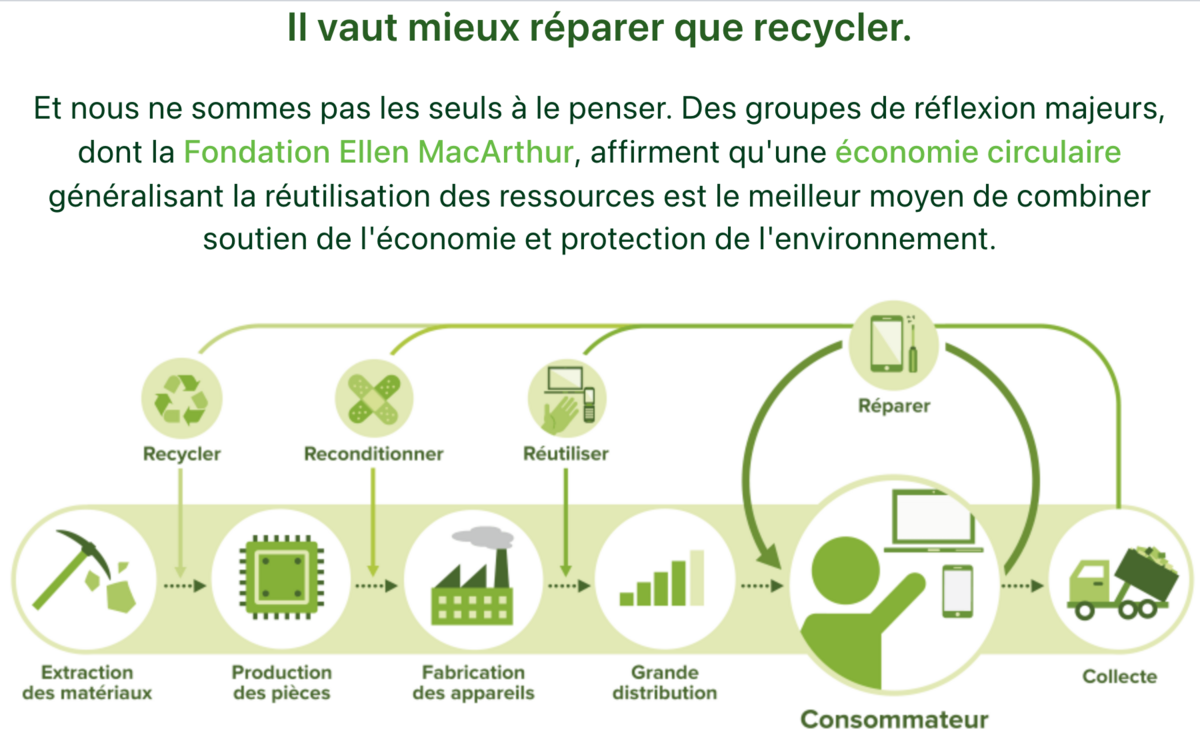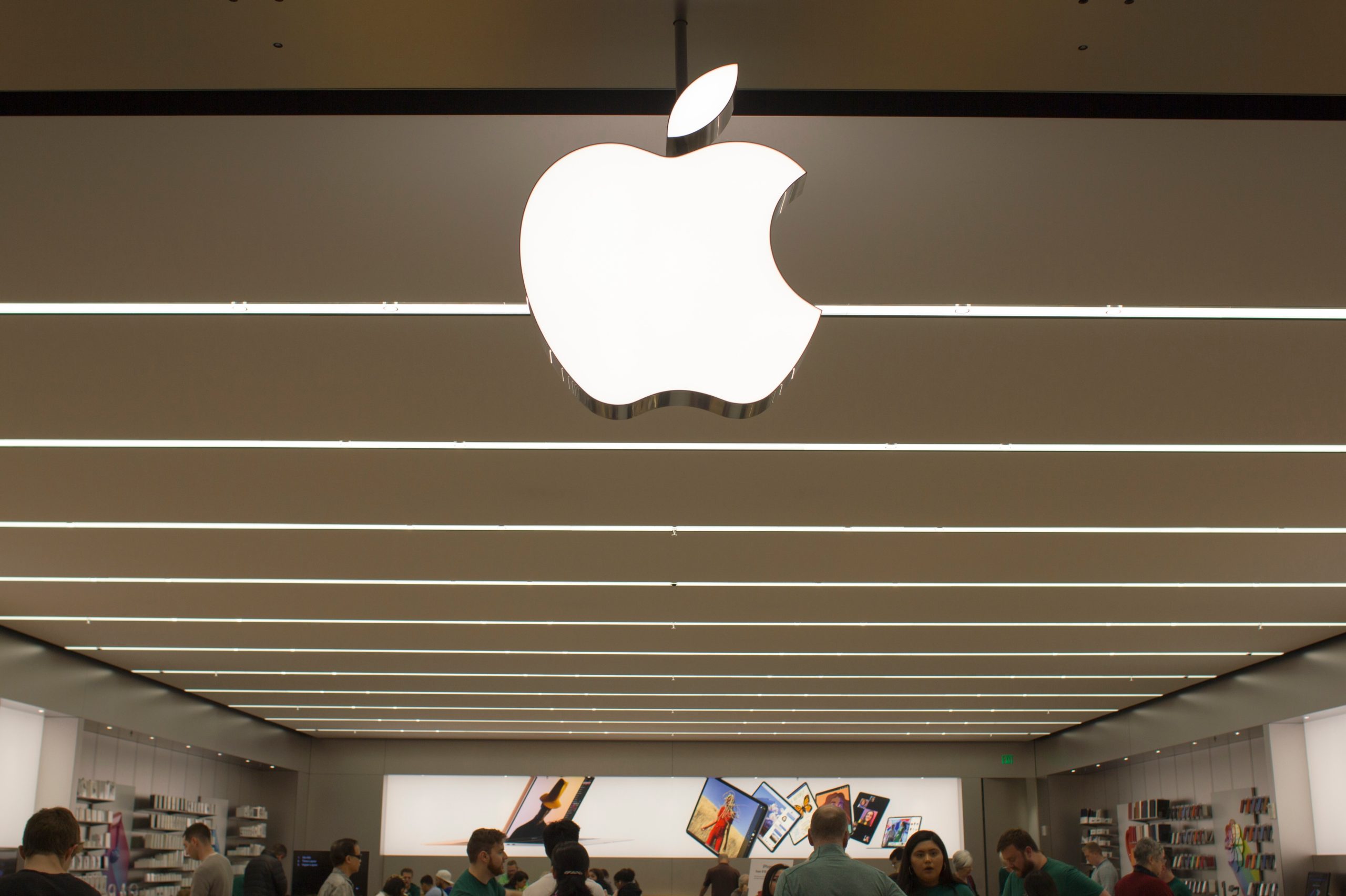The Apple firm displays a strong commitment to environmental protection. However, behind this green label, things remain imperfect, to the point of wondering if all these statements are not a little misleading. Spoiler: they are.
In the fight against climate change, manufacturers have an essential role to play. And for good reason: directly and indirectly, they are among the largest emitters of greenhouse gases. This is why many sectors are working on solutions to reduce their impact on our planet, and the tech world is no exception.
Google, Samsung, Microsoft, Amazon, Meta… Everyone has their own plan to offer more environmentally friendly products and services. But, in this area, Apple is certainly one of the loudest.
A not totally green smartwatch
You have undoubtedly come across this statement since the Apple firm’s last keynote: “ L’Apple Watch is the first carbon neutral Apple product “. It is through the use of recycled materials, renewable energy and non-air modes of transport that this feat would be achievable, at least with certain very specific combinations of models and bracelets.
Of course, the production of such a product cannot be free of CO emissions.2, it is even almost impossible with current technologies. In fact, to reduce the environmental impact of its connected watch, Apple has resorted to the ultimate weapon of manufacturers and governments in the fight against global warming: carbon offsetting.
This approach is quite simple to summarize: after having calculated the greenhouse gas emissions of its activities, an entity engages in various projects around the world, all intended to reduce the equivalent of this CO production.2. This often involves replanting cleared forests or restoring previously altered ecosystems, to name just the most common solutions. And there are many others, like carbon capture which is on the rise.
However, everything is not perfect, because projects are not always well monitored. As revealed The Guardian in January 2023, 90% of projects carried out by Will see, the organization managing one of the world’s largest carbon credit standards, have failed to reduce greenhouse gas emissions. Poorly supervised, or even poorly designed, they even tend to move activities that are harmful to the environment elsewhere.
Proper greenwashing?
CO emissions2 of Apple’s entire supply and production chain are difficult to track and calculate. There are, in fact, many subcontractors and just as many intermediaries to be able to build a smartphone or a connected watch. So, if Apple asks its suppliers to change their practices, to invest in renewable energies or to engage in carbon offsetting projects, the actions do not necessarily follow.
Not everyone has the same means as the American giant, or simply does not seek to be as transparent as it. In addition, some regulators are less careful about the origin of products and raw materials than in the most developed markets. While it is not impossible, it is very unlikely that the carbon credits obtained by Apple will actually and completely offset CO emissions.2 generated by his connected watch.

Especially since this only represents a small part of all the products marketed by the American company. We can therefore assume that Apple’s claims about carbon neutrality are based on calculations… far-fetched. Is the company then lying to us? Legally, not yet. However, certain organizations, such as ADEME in France or BEUC for the EU, seek to eliminate the argument of ” carbon neutrality ”, which too often turns out to be misleading.
In the case of the Apple Watch, we are led to believe that it would have no impact on the environment, which would be “ a little ridiculous “, according to David Ho, climatologist at the University of Hawaii. “ This gives consumers the idea that there are solutions to these problems that do not involve consuming less “, he adds, “ there is no carbon neutral product “.
A difficult balance to maintain between profits and environment
Should we spit in the soup? Apple’s commitments are not completely empty, and we can say that it is better than nothing. Other tech giants are less verbose in this area, and Apple’s green argument could accelerate the race for ecology in this sector. However, the road ahead still seems long and winding, both for businesses and consumers.
In an almost lunar sequence, Tim Cook declared to our colleagues to Raw : “ I think having a [nouvel] iPhone every year, for those who want it, is a good thing “. If the Apple boss is in favor of reselling or recycling devices, which is not the worst solution, the most virtuous for the environment remains repair.
Apple has made progress in this area, but such a statement from one of the most influential businessmen in the world reminds us that clearing inventory remains essential for this type of company. Ecology therefore involves other methods, easier to implement but less effective, and always adapted to current economic models.
Take the example of the iPhone 15, which has a feature to preserve its battery by limiting its charge to 80% of its capacity. This is a very good idea! However, a small downside: previous models cannot benefit from this option, although it would be entirely possible on paper. So ecology should necessarily be done with the purchase of a new model?
Is the grass greener elsewhere?
Apple’s competitors have no shortage of good ideas. Google, for example, has committed to providing updates to its latest smartphones for the next seven years, which is not common in the industry. To ensure such a lifespan, the American giant also facilitates the replacement of certain parts of the Pixel 8, in particular their batteries. A gesture that we didn’t see coming, but which is more than welcome.
Smaller brands, like Nokia with its G22, are trying to highlight the eco-responsibility of their products, using the argument of sustainability and the use of recycled materials. If the resources mobilized are similar to those of Apple, carbon neutrality is not mentioned, which makes the ecological objectives of these companies less misleading and clearer.
In terms of eco-responsibility, the champions remain Fairphone and Framework. These companies have focused on the repairability of their devices, which is currently the best way to reduce the impact of the tech industry on the environment. However, nothing is perfect, and even top performers face difficulty tracking the carbon impact of their suppliers.

Apple can invest as much as it wants in planting trees or building solar farms, but manufacturing a new device from scratch, or almost, will inevitably have a greater impact on our planet. The firm still remains exemplary in one area: that of software monitoring. The first version of the Apple Watch, for example, has just joined the brand’s club of obsolete products. A great career, spanning nine years, that not all manufacturers are capable of offering to their customers.
For their part, the iPhones are not left out, since they receive new major updates almost five years after their releases. In this area, most competitors are clearly lagging behind, and Apple is a good student.
Source : The Guardian, ADEME, iFixit, Key Discussions, Financial Times

19